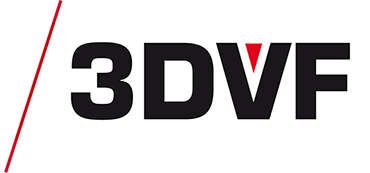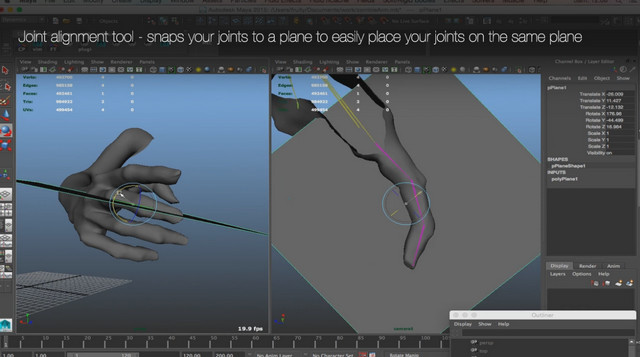Vincent Touache présente une nouvelle showreel, centrée sur le développement d’outils pour Maya.
dev reel 2016 from fruity on Vimeo.
Breakdown :
1 – Pose reader – cpp
I’m sure the inspiration is obvious =] The node can take 1 input array and n input poses, and outputs an array of weights. At the moment, the solvers available are :
-> least-square interpolation solved by svd
-> gaussian rbf distance measurement
-> linear distance measurement
-> gaussian rbf interpolation.
2 – Presto-like controller – cpp
With a given skinned mesh, it’ll create a bunch of controllers based on the weights. The controllers’ visibility are triggered on over, so no need to click to see what will be deformed. In a production context, however, the ‘over’ feature can reduce your framerate. So the next step is expose an attribute for the animator to enable or disable this ‘over’ behavior ! Obviously, color, offset, opacity, etc… are already exposed.
3 – Hydra – python
My day-to-day best friend ! Allow to do everything by typing it. It can read python or mel, and most of the maya commands, but any command can be added by providing an external file with an icon (possibly one of the ressources icons), a ‘normal’ action, an ‘option’ action, and the language.
4. PlaneToAlign – python
Creates a plane and constraints n joints on its surface, to place them easily. A camera is also created, oriented and set to make things easier. The default position of the plane can be set either using a setup of constraints, or without creating any node in the scene, using maths. Once it’s done, everything is removed but the joints stay in place ! (model by Claire Blustin)
5. Smooth deformer – cpp
Equivalent to the delta mush deformer. Applies a laplacian algorithm, then stores the vector between the pre-deformed mesh and a base mesh to re-apply it on the deformed mesh. There are 2 methods of preservation : the first one, based on quaternions, is fastest but tends to flip sometimes, so the second one, which rebuilds a transformation matrix, can be used.
It also comes with a ‘bulge’ option, and a super simple collider.
(in this example, the tension map is just here for visualizing, the smooth deformer can work without anything to drive its weights)
6. Oriented bounding box – cpp
Based on a point cloud, the command will try to find the best orientation, using PCA to get the 3 eigen vectors. It returns 3 rotations values, and can draw the 3 vectors (for visualization) or re-align the object directly.
Music : m.o.o.n – Dust

